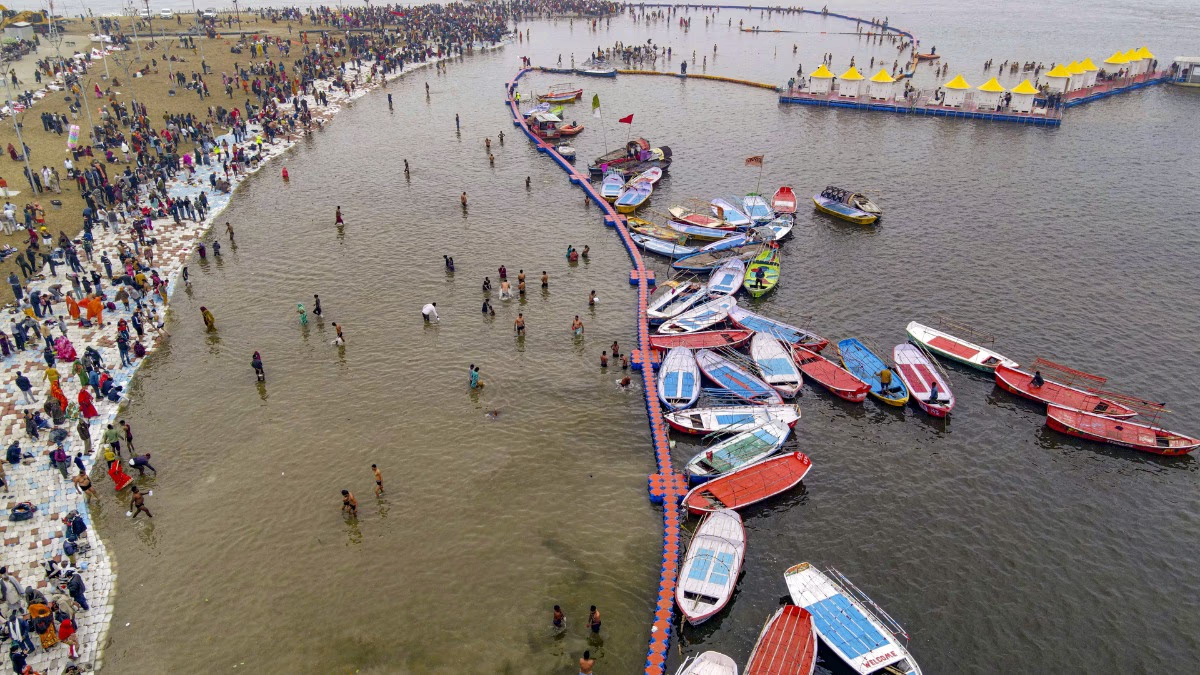The Mahakumbh Mela, a symbol of India's ancient heritage and spirituality, has commenced today in the holy city of Prayagraj. The auspicious Amrit Snan marks the celebration on the occasion of Paush Purnima. Pilgrims are taking sacred dips at the confluence of the Ganges, Yamuna, and the mythical Saraswati rivers since early morning. Approximately 10 million pilgrims are expected to participate today, with the first royal bath scheduled for Makar Sankranti. This colossal congregation, considered the world's largest fair, is anticipated to attract 450 million devotees from across India and beyond.
All Akharas (spiritual communities) attending the Mahakumbh will begin their spiritual retreats today at the Sangam banks. Following tradition, the Juna Akhara will lead the royal ritual dip. Subsequently, other Akharas will partake in the sacred dips. A vast security apparatus is in place to ensure safe and streamlined proceedings throughout the fair and the surrounding region.
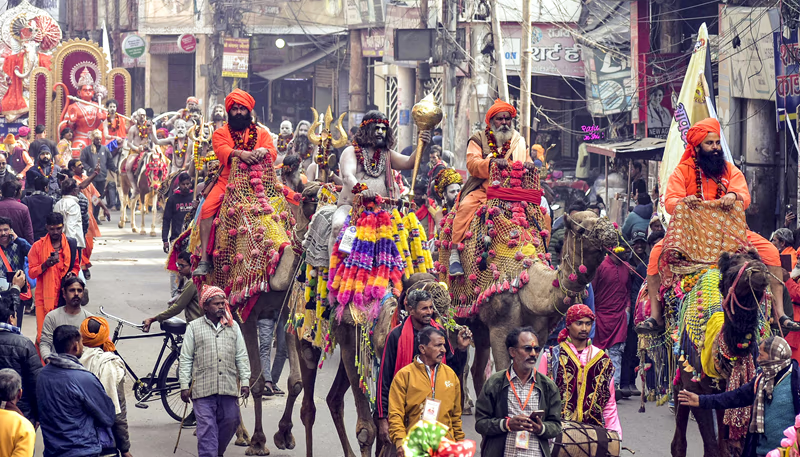
Source: aajtak
Let's delve into 25 intriguing facts about Mahakumbh 2025:
1.
Held every 12 years, the Mahakumbh Mela invites saints, sages, and devotees worldwide for a spiritually rejuvenating dip in the holy waters. Known as Amrit Snan, this ritual bath during the festival is believed to cleanse one of sins and bring spiritual merit, thus bringing individuals closer to divinity.
2.
The massive Mahakumbh Mela stretches over 4000 hectares, divided into 25 sectors. The Uttar Pradesh government has elevated the fair ground to the status of the state's 76th district. This year's Mahakumbh is deemed particularly auspicious due to a rare planetary alignment occurring after 144 years, enhancing its spiritual significance.
3.
A total of 41 ghats (bathing banks) are prepared for the event, with 10 permanent and 31 temporary arrangements. The Sangam Ghat stands as the most significant, marking the confluence of the Ganges, Yamuna, and Saraswati rivers, also revered as the Triveni Sangam.
Read more:
4.
Akharas, central to the Mahakumbh's allure, are historically rooted by Adi Shankaracharya to safeguard dharma. Presently, there are 13 Akharas categorized into Shaiva, Vaishnava, and Udasin sects. Adherents within each sect practice distinct forms of worship, centered around divine entities, including Lord Shiva, Lord Vishnu, and the sacred symbol 'Om'.
5.
An overwhelming influx of approximately 450 million pilgrims is anticipated, spanning from across the globe. The diverse presence of mystics, Naga Sadhus, and performers each bring their unique spiritual endeavors, drawing awe and curiosity from attendees.
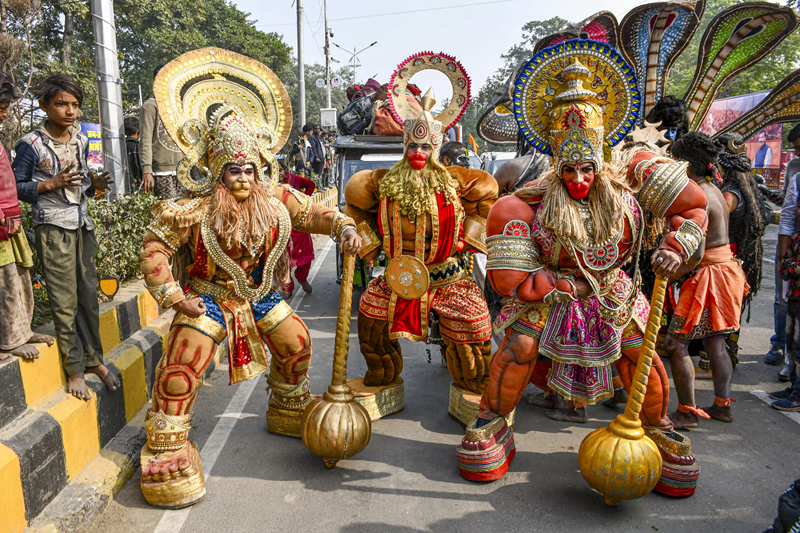
Source: aajtak
6.
The initial royal bath during Mahakumbh 2025 will coincide with Makar Sankranti, attracting an estimated 70 million pilgrims to the holy confluence. Notable dates for subsequent royal baths include January 29 (Mauni Amavasya), February 3 (Basant Panchami), February 12 (Maghi Purnima), and February 26 (Mahashivaratri), marking the festival's conclusion.
7.
In anticipation of emergencies, each sector accommodates a central hospital and a 20-bed facility, complemented by over 300 divers stationed across ghats, poised to manage emergencies. Ensuring the safety of the masses, an elaborate seven-layered security measure incorporates NSG commandos and UP police personnel.
8.
AI-powered cameras, drones, and anti-drone systems bolster crowd management and surveillance. Over 15,000 civil police personnel and 113 drones oversee fairgrounds and entry points. At critical junctures, 102 checkpoints strategize the movement and safety within the fair area.
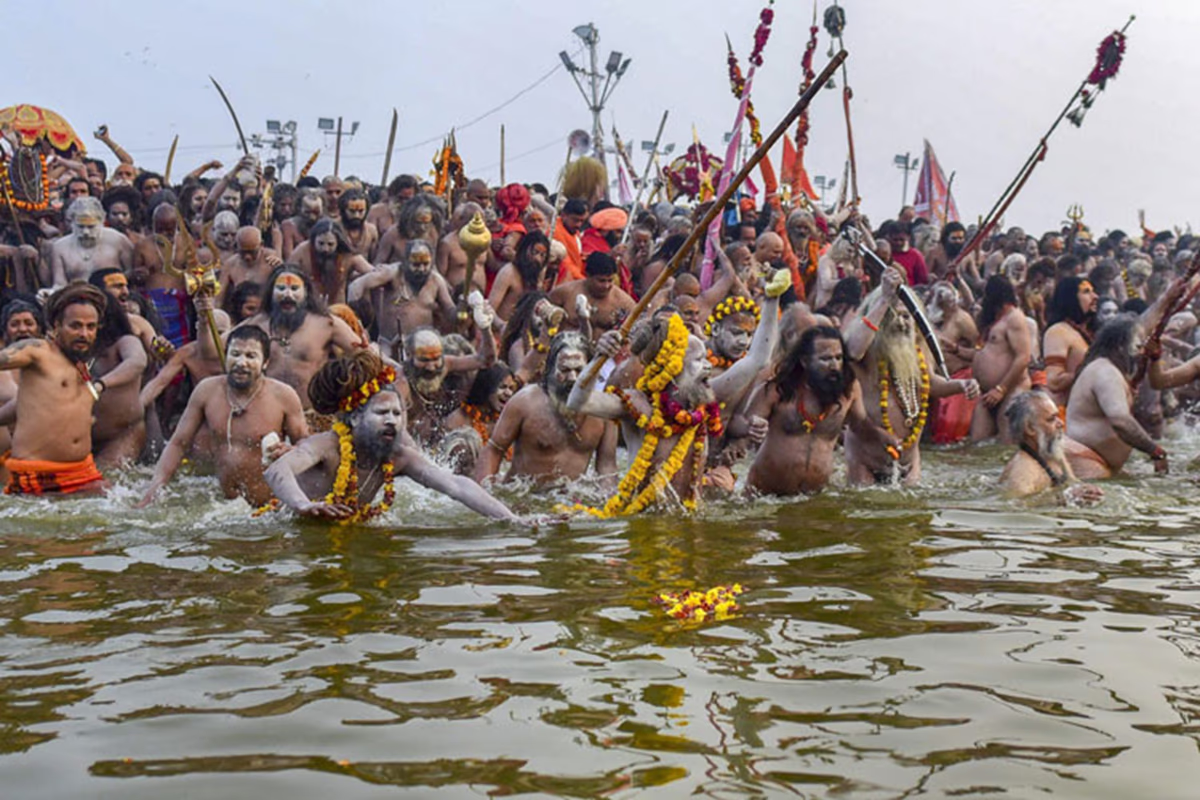
Source: aajtak
9.
Forecasted to inject an economic boon of over 25,000 crore rupees into the state's coffers, Mahakumbh 2025 is projected to spur a 2 trillion rupees economic impact. It offers myriad opportunities to local artisans, hoteliers, homestay owners, and commercial sectors including eminent brands like Dabur and Mother Dairy.
Read more:
10.
To assist pilgrims in navigation and to register grievances related to electricity through QR codes, over 50,000 are strategically affixed on poles. The Minister of Urban Development and Energy highlighted this initiative poised to streamline logistics for visitors.
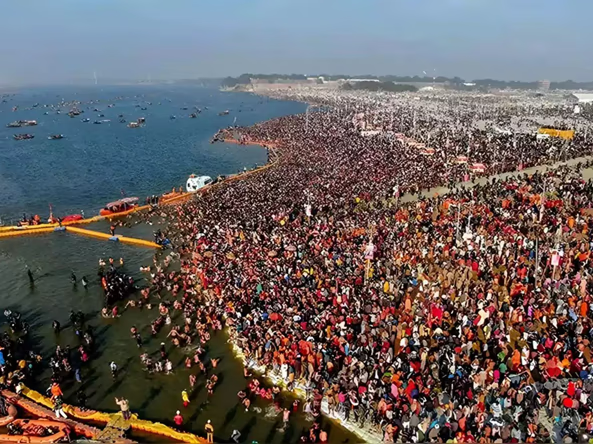
Source: aajtak
11.
The Ministry of Culture anticipates over 1.5 million international tourists, facilitated by a Tent City offering Ayurvedic treatments, yoga, and wellness programs. An expansive 'Kalagram' spanning 10 acres shall exhibit India's rich cultural heritage.
12.
A major attraction, Kalagram, will host cultural performances and showcase replicas of the Char Dhams and 12 Jyotirlingas. It will house a vast array of Indian arts with skilled artisans demonstrating traditional crafts over a 45-day period across various landmark venues.
13.
The fair's administration estimates diverse regional influxes, with forecasts of pilgrim entries via major routes like Jaunpur (21%), Rewa/Banda (18%), and others, delineating primary pathways into Prayagraj, comprising seven principal routes facilitating seamless reach.
Read more:
14.
Transport arrangements feature extensive parking facilities within ranges of 5-10 kilometers. Five kilometers proximity houses 70% of parking grounds, supplemented by 24 satellite lots offering basic amenities to assist the influx.
15.
Indian Railways has launched 3,000 special trains ferrying devotees over 13,000 trips, paralleled by sister stations enhancing connectivity amidst the north-central, northern, and northeastern zones. Special bath day services halt at key junctions, optimizing pilgrim flows.
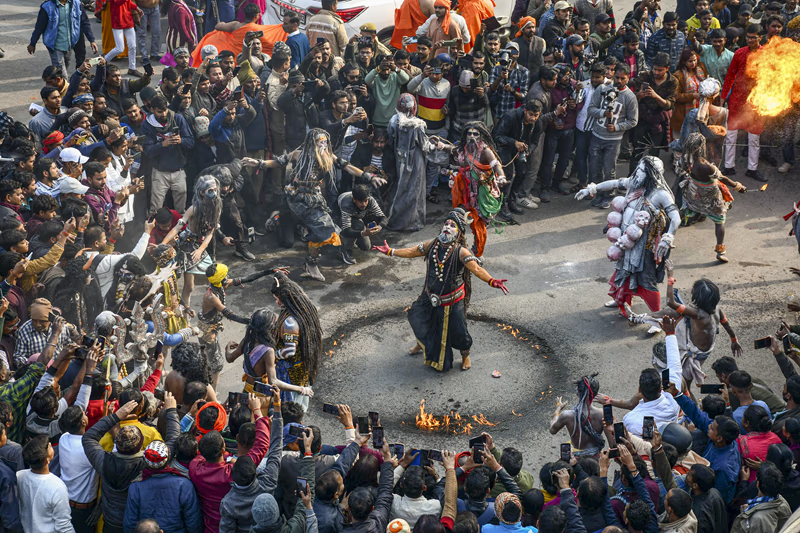
Source: aajtak
16.
Trains diverging from metropolitan hubs like Lucknow and Ayodhya shall culminate at strategic points like Fafamau and other regional stations during peak ritual days, orchestrating logistics to counteract congestion at the central hub.
17.
Prayagraj Junction, inclusive of eight other transit stations, delineates separate entry-exit pathways, orchestrating traffic from major platforms towards the Sangam site. A helpline, 1800 4199 139, serves as a dedicated Mahakumbh inquiry resource.
18.
Robust air connectivity through regional flights connects Prayagraj to major cities, ensuring global access to the divine confluence and enabling seamless return post the sacred pilgrimage.
Read more:
19.
The administration offers extensive temporary and luxurious accommodations. For visitors seeking opulence, Dome City near the Sangam offers premium lodging. Budget-friendly accommodations are also prevalent, requiring pre-arranged bookings owing to demand.
20.
42 upscale hotels alongside 100 shelter centers accommodate devotees, each housing several beds. Local self-help groups and volunteer organizations contribute to lodging and dining for longer-staying pilgrims.
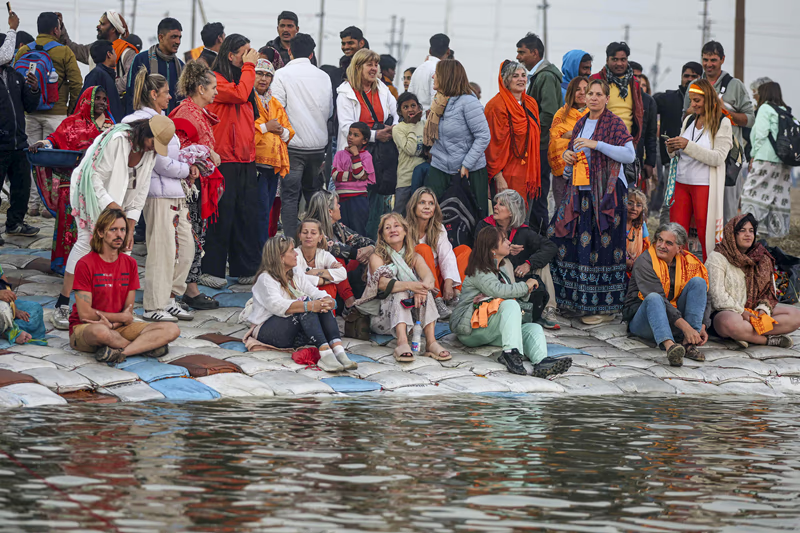
Source: aajtak
21.
Three thousand restful beds and a litany of guest houses serve the Sangam area. Residents welcome visitors via licensed and trained home-stays. Navigation aid through detailed maps, including Google’s special arrangements, simplifies traversing the expansive fair.
22.
An official app, 'Maha Kumbh Mela 2025', offers geographical and informative insights regarding Mahakumbh, facilitating seamless exploration with features like digital navigation and site specifics.
23.
Post-Mela, tourists can venture to other spiritual and historical landmarks in Prayagraj, encapsulating a rich tapestry of cultural and spiritual connotations within its temple landscapes and historical edifices.
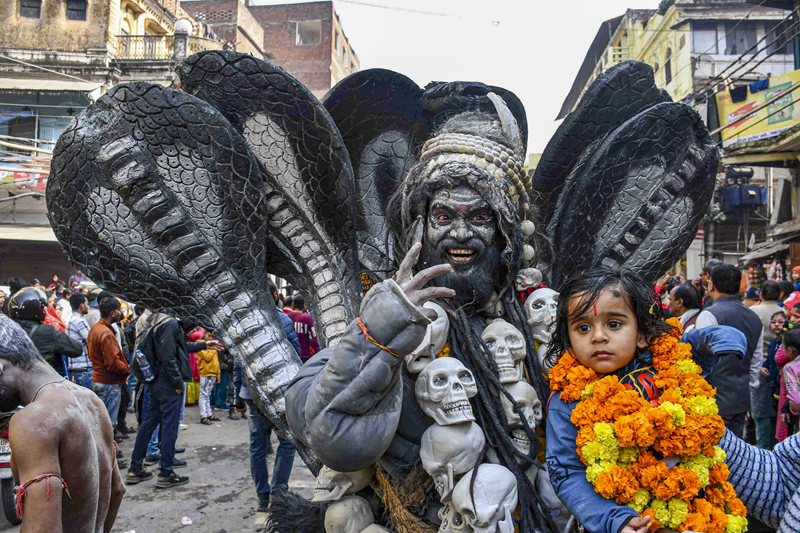
Source: aajtak
Read more:
24.
Culinary delights beckon visitors in Prayagraj, promising a gastronomic journey to relish traditional treats like Kachori-Sabzi and Samosas. Legendary eateries, steeped in history, offer quintessential local flavors unavailable elsewhere.
25.
For a nominal fee of INR 1,296, one can witness Mahakumbh's majesty from above, thanks to a government-subsidized helicopter ride offering mesmerizing aerial vistas. Ticket bookings are conveniently accessible online.



